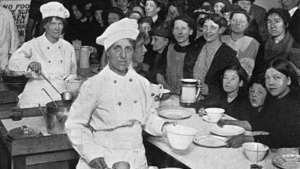Health & Safety Lessons learnt from World War I
The Influence of Health & Safety During WWI
This year marks the 100th anniversary of World War I (WWI) and we can see in business today the health and safety lessons learned.
Due to increased demand for munitions, companies noted that despite employees working hard, productivity and quality were low. This needed to be improved to meet the demands of the War.
In 1915 the Ministry of Munitions established the Health of Mention Worker Committee to address these issues. It was the first national strategy undertaken on a specific workplace type but had lasting effects on health and safety for everyone.
The Committee looked at topics such as health, working hours, temperature, ventilation and lighting. This article will not cover all of their research and findings but will look at a couple of issues such as health and working hours and the interesting discoveries made.
Health
Many workers were from poor families and had restricted, if any food, leading to a lack of energy to perform their tasks. To combat this, the Committee established Industrial canteens with good meals at cheap prices.
 This issue was noted when the Olympic Park was constructed in 2012. Food was abundant but timing was the issue. A lack of breakfast meant many started work with depleted energy leading to increased morning accidents (in comparison with the rest of the day). The occupational Health and Safety team had the catering company add a £1.00 porridge breakfast to the menu which resolved the issue. Now not all accidents were eliminated but the spread was even throughout the day rather than concentrated in the mornings.
This issue was noted when the Olympic Park was constructed in 2012. Food was abundant but timing was the issue. A lack of breakfast meant many started work with depleted energy leading to increased morning accidents (in comparison with the rest of the day). The occupational Health and Safety team had the catering company add a £1.00 porridge breakfast to the menu which resolved the issue. Now not all accidents were eliminated but the spread was even throughout the day rather than concentrated in the mornings.
Back in 1915 the Committee wanted to ensure workers were fit to do the task so health screening was established looking for illnesses or malnutrition which would impede their work. Health screening was also undertaken in regards to the hazardous substances used in the munition work, to ensure workers remained fit and healthy and created a hierarchy of controls.
Working Hours
Working hours was another topic covered by the Committee who noted that the more hours worked, the less productive workers became. Workers were putting in 12 to 16 hour shifts but the output was lower than expected.
The Committee recommended 8 hour shifts with an hour for lunch and other breaks during the shift as well as one day off a week, all to prevent worker fatigue.
It is interesting to note that the UK opts out of the Working Time Directive 20103 and has one of the longest average working weeks in Europe but productivity ranks the lowest of all the G8 economies – coincidence?
So to summarise; the findings of the Committee concluded that by improving working conditions you improve not only worker performance but overall business performance – a lesson learned long ago but still not fully taken on board and understood by companies 100 years later.










Leave a Reply
Want to join the discussion?Feel free to contribute!